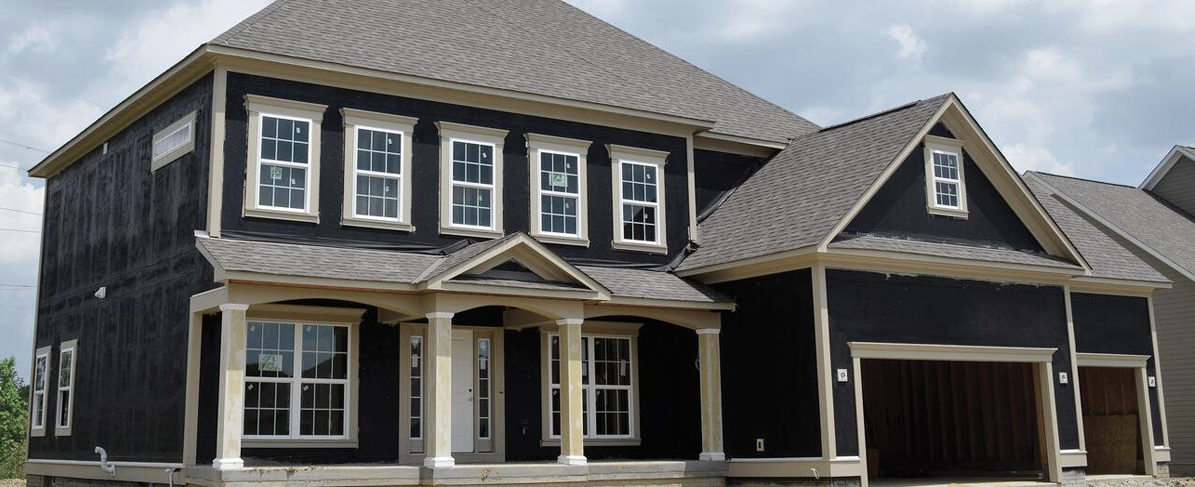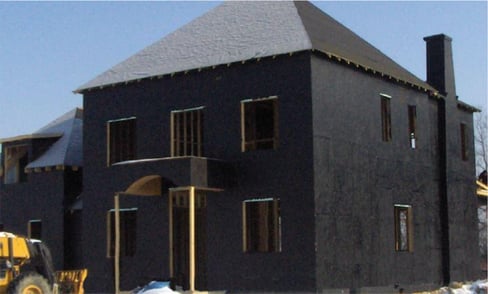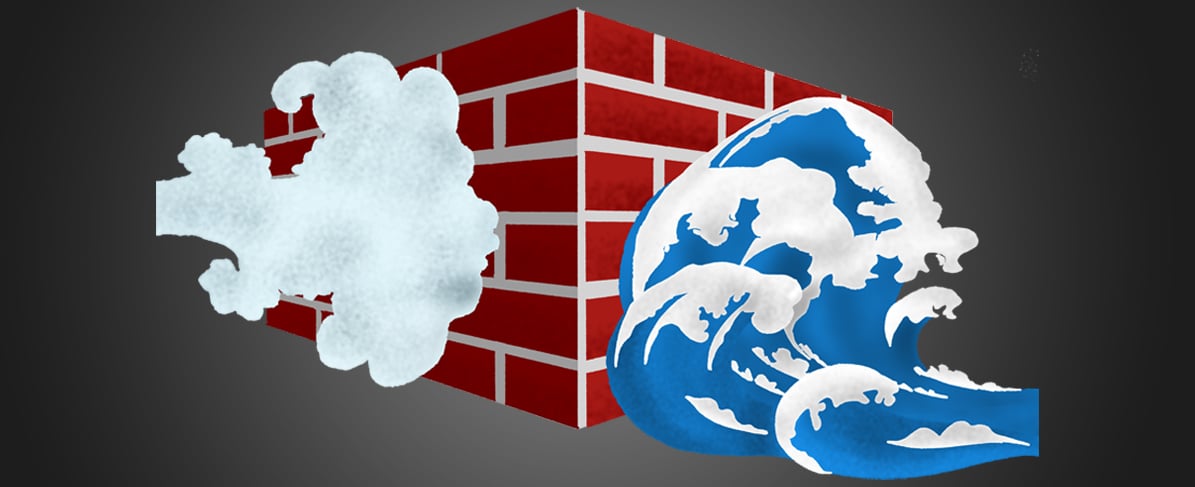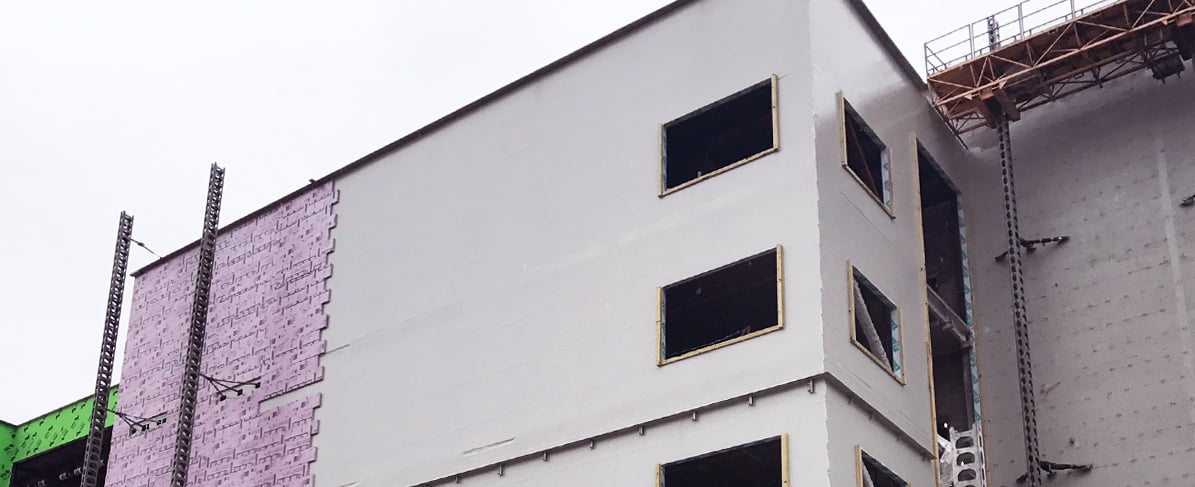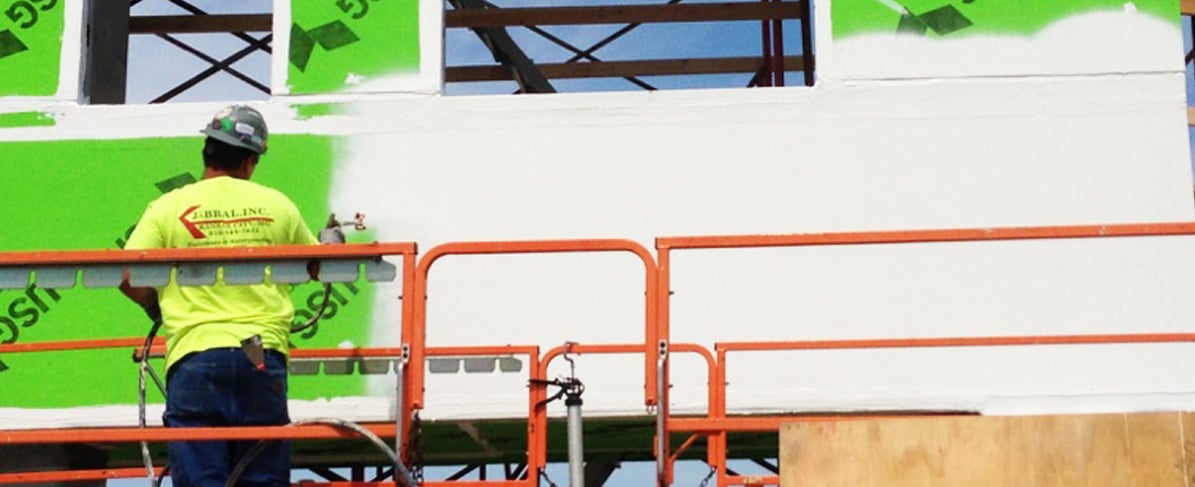With various types of water resistant barriers (WRB) available today, it can be challenging to choose the right one for your project, especially when it comes to residential buildings. However, knowing some of the more important characteristics of each type of WRB will help you make the right decision about water barriers.
The WRB types mentioned here are designed to protect the above-grade sheathing of your home and prevent liquid moisture intrusion, uncontrolled air infiltration and trapped moisture vapor. Let’s take a closer look at residential water resistant, also known as weather-resistant, barrier types and how to choose the right technologies based on the quality demanded by the homeowner or builder.
Choosing the Right Water Resistant Barrier for New Homes
There is a high probability that vapor or water intrusion will occur at some point during a house’s lifetime. In fact, over 80% of all construction litigation is from water intrusion and the top complaint of new homeowners is a leaky basement.
Aside from it being required by code, WRBs should always be in place to prevent liquid moisture from penetrating your sheathing system while also allowing moisture vapor to pass to the outside. There are a few types of water barriers to choose from:
- #15 Asphalt Felt: Asphalt felt, the oldest material in use today, is made from recycled paper products, such as cardboard and sawdust, and coated with asphalt. It is applied by mechanically fastening to the building.
- Grade D Building Paper- Grade D Building Paper is made of asphalt- impregnated kraft paper that is mechanically fastened to the sheathing.
- Plastic Housewraps: Another traditional WRB option, housewraps are typically made of polyolefin fabric and are designed to allow water vapor to permeate and pass through it while keeping liquid water out. These materials are also mechanically attached to the building.
- Liquid Applied WRBs/Air Barriers: Liquid-applied technologies can be rolled, sprayed, and/or brushed onto a surface to form a monolithic coating. Although it stops liquid water and air infiltration, it still allows for vapor diffusion through the material, allowing the wall assembly to dry.
- Integrated WRB- The WRB is bonded to the sheathing in a factory setting for easier on-site installation. From there, seams between the boards are detailed in the field.
- Self-Adhered WRBs: WRBs that have an adhesive for application rather than being mechanically fastened.
Among these WRB products, there will be permeable and impermeable technologies available. Much like the name implies, permeable barriers will allow water vapor to pass through the material while impermeable barriers will block out both water vapor and liquid water. Most WRBs are permeable to allow any areas compromised by vapor or liquid to dry out.
This is especially important if you are dealing with wood-frame construction, as a permeable material will prevent water vapor from becoming trapped and causing decay or mold growth. With a permeable material, if water vapor happens to get into the wall assembly, it will be diffused in either direction, depending on the weather, to help the wall assembly to dry out.
Understanding Requirements for Residential Construction
Taking up less than 1% of total building costs, there is no reason why all new homes under construction shouldn’t have some type of water resistant barrier in place. WRBs protect walls from liquid moisture and moisture-laden air infiltration while also allowing moisture vapor to dry to the outside or inside. Without WRBs, sheathing and other components of a wall assembly become prone to water damage.
In fact, International Residential Code requires that the “exterior wall envelope shall be designed and constructed in a manner that prevents the accumulation of water within the wall assembly by providing a water-resistant barrier behind the exterior cladding as required by Section R703.2 and a means of draining to the exterior water that penetrates the exterior cladding.”
Finding the Right Technology for Your Project
If you want to ensure that you have the highest-quality water resistant barrier system for your new home, a fluid-applied WRB is the best choice for the job. There are several benefits of fluid-applied WRBs compared to mechanically-fastened materials and integrated systems:
- Fluid-applied products eliminate the need for mechanical fasteners during installation. No nails, staples or penetrations mean there are no unnecessary holes. Because of this, water can't seep or flow between fluid-applied WRB and sheathing.
- Fluid WRBs will be present for the life of the home. There is no risk of reverse shingling, which can occur with housewraps or integrated WRBs. They won't tear or rip, and there is no risk of them blowing off during extreme weather events.
- Fluid-applied products are not affected by surfactants (surface active contaminants) found in mortar, stucco, wood and cementitious siding, paint, soaps and other sources, which can diminish the ability of other WRBs to stop water infiltration.
- In states that require blower door testing, fluid-applied WRBs are a more commonly used method because of its ability to consistently meet the air changes per hour standards of the energy code.
- Fluid-applied products are easier for detailing around penetrations (like windows and doors) and when transitioning to different substrates (wall to window/door, wall to foundation and wall to roof).
Another differentiator of fluid-applied WRBs is that there are several different application processes depending on contractor preference. You have the choice between spraying, rolling or brushing on the barrier — with spraying being the fastest method.
The Best Water Resistant Barrier for Your Next Project
It’s time to start meeting the basic code standards and choose the water resistant barriers that your residential construction projects need to stand the test of time. Click here to learn more about Tremco’s weather-resistant barrier systems and how they can help ensure that your home is built to last.
